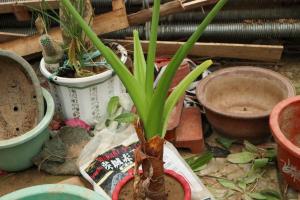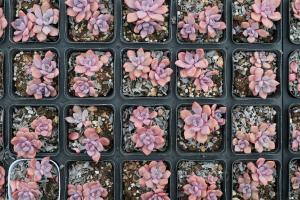What is a Grafted Tomato Plant?
Tomatoes are a widely grown and loved garden crop all around the world. However, gardeners are starting to find new and better ways to improve the yield and quality of their tomato plants. One such method is known as grafting.
What is Grafting?
Grafting is a technique that involves joining two different plants together to grow as one. It is commonly used in agriculture to improve plant growth, disease resistance, and yield. In horticulture, grafting is used for the same reasons but also to create unique and unusual plants with desirable characteristics.
How is a Tomato Plant Grafted?
To graft a tomato plant, a seedling that has desirable rootstock is selected. Rootstock refers to the part of the plant that is below the soil level and is responsible for absorbing water and nutrients. The top part of the seedling is then cut off and a scion, which is the top part of another tomato plant that has desirable fruit characteristics, is attached to the rootstock.
What are the Benefits of Grafted Tomato Plants?
Grafted tomato plants have several benefits over traditional, non-grafted plants. Firstly, they are more resistant to soil-borne diseases such as Fusarium and Verticillium wilt. Secondly, grafting can improve the plant's root system, which results in an increase in yield and overall plant health. Thirdly, grafted plants have the ability to thrive in soils that are not ideal for standard tomato plants. Finally, grafted plants are more adaptable to extreme weather conditions such as drought, high heat, or cold temperatures.
How to Care for Grafted Tomato Plants?
Caring for grafted tomato plants is similar to caring for traditional tomato plants. The plants require full sun and consistent watering. Providing the plants with appropriate fertilizer and nutrients will help to ensure healthy growth and fruit development. Pruning the plants to remove dead or diseased branches will keep the plant healthy and reduce the risk of disease spreading.
Conclusion
In conclusion, grafted tomato plants are a great option for gardeners who want to improve the yield and health of their tomato plants. Grafting involves joining two different tomato plants together to create a stronger, more disease-resistant plant. With proper care, grafted tomato plants can produce a bountiful harvest of delicious, healthy tomatoes.

 how many times do yo...
how many times do yo... how many planted tre...
how many planted tre... how many pine trees ...
how many pine trees ... how many pecan trees...
how many pecan trees... how many plants comp...
how many plants comp... how many plants can ...
how many plants can ... how many plants and ...
how many plants and ... how many pepper plan...
how many pepper plan...






























